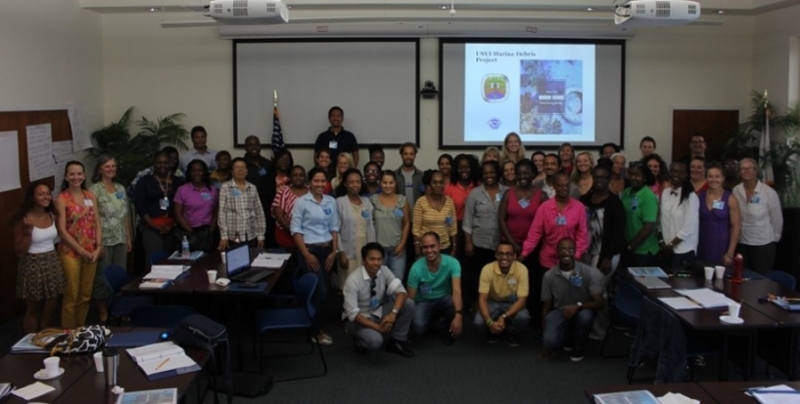Meet Charles Grisafi, the NOAA Marine Debris Program’s (MDP’s) Florida and Caribbean Regional Coordinator! A Florida native, Charles has spent a good deal of time in this region and received his B.S. in Political Science with a minor in Environmental Science from Florida State University. After graduating, Charles relocated to Washington D.C. and worked with the Pew Environment Group, where he focused on marine conservation issues. Charles then returned to Florida to work as an Environmental Specialist for the Florida Department of Environmental Protection, focusing on beach and coastal systems programs and emergency response after coastal natural disasters. Charles is currently living in Tampa, where he is working towards his M.A. in Coastal Sustainability with a focus on Coastal Zone Management from the University of South Florida. In March 2017, Charles joined the MDP team as the Regional Coordinator for our new Florida & the Caribbean region. Reach out to Charles at charles.grisafi@noaa.gov!
Florida and the Caribbean are full of palm trees, beautiful beaches, and clear waters. Unfortunately, like many coastal areas around the world, the NOAA Marine Debris Program’s newest region is also plagued with marine debris. Luckily, there are several efforts currently underway to address this problem. Check out two newly-established projects in the NOAA Marine Debris Program’s Florida & the Caribbean Region and visit our website for more:
In the U.S. Virgin Islands, the University of the Virgin Islands (UVI) is working to reduce debris coming from land-based sources through a targeted ridge-to-reef and watershed educational and outreach program that engages partners, territorial educators, school children, and graduate students. Pre-existing marine debris curricula is being adapted to be more locally-relevant, and classrooms that are participating in the program are connecting with other groups to explore creative ways to transfer information that’s learned in school to the broader community. For more on this project, check out the project profile!

Unfortunately, there’s enough debris out there that we have to focus on removing it too. To address the many abandoned and derelict vessels (ADVs) that litter Fajardo Bay in Puerto Rico, the Puerto Rico Department of Natural and Environmental Resources (DNER) is working to assess and remove five derelict vessels in the nearshore waters of the Bay, and is leading additional removal events within marine reserves in the area. Information gathered during these events will help to identify the main sources of marine debris, which will inform the development of prevention strategies. For more on this project, check out the project profile!
There are lots of cool things happening in Florida and the Caribbean! Keep your eye on our blog this week for more, and check out our website for more interesting marine debris projects in Florida and the Caribbean, and throughout the country!

Currently living in Belize. Astonished by the marine debris issues here from local and international land sources.
What to do ?
Regards
Nic Wright